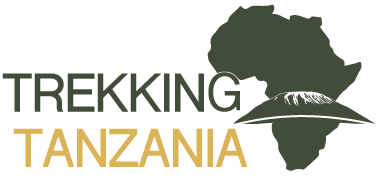Best Time To Climb Mountain Kilimanjaro
Kilimanjaro is open to trekkers all year round. But most folks opt to avoid the wettest and coldest months. We tell you the climbing conditions of each season and identify the most ideal climbing times.
We recommend climbing Kilimanjaro between mid-December and March, or between mid-June and October, to enjoy the best weather conditions.
An important part of anyone’s Kilimanjaro preparation is choosing a time of year to climb the mountain. While you can climb Kilimanjaro any time of year, some months are just better than others.
We aim to help you choose the best time of year for you to climb the mountain by offering our cumulative expert advice, which is based on many years of trekking Kilimanjaro.
What is the weather on Kilimanjaro?
Tanzania, home to the magnificent Mt Kilimanjaro, is located near the Equator, and so it won’t surprise you to learn that most of the country experiences some very hot months.
Yet Mount Kilimanjaro itself rises to 5,895 m above sea level, which gives its summit an arctic climate. This means Kilimanjaro trekkers can experience extremes of both heat and cold.
But when are you likely to avoid the worst of the heat as well as the worst of the cold? Furthermore, since some months experience more precipitation than others, when is the best time of year for climbing the mountain to avoid slopping around on a saturated path?
Our seasonal overview below can help you to choose the best time to climb Kilimanjaro from a weather perspective.
The short dry season: Mid December to March
Late December, January, February, and March are great months for climbing Kilimanjaro. For starters, while there’s some rain during this season, it’s not extreme.
As you climb higher up the mountain, the weather is generally colder than it is during the other months, which means a higher probability of seeing snow on the summit. Snow on the summit is, of course, very beautiful. That said, trekking in snow doesn’t appeal to everyone, and that combined with the lower temperatures, means these months tend to be quieter than the others. This is great if you’re not too keen on crowds!
Please note that December generally sees the most snowfall on the summit. While it can be incredibly beautiful to walk in fresh snow, it does mean you might not have a clear view from the summit over the surrounding landscape if there’s snowfall.
If you decide to climb Kilimanjaro during the short dry season and are hoping to miss the crowds, we suggest you steer away from the busier routes like the Machame.
The long rainy season: April and May
April, May, and November are generally speaking the least comfortable months to climb Kilimanjaro in terms of weather. The days can be very hot (as well as humid in the rainforest). Further, these are the wettest months, and you could end up trekking through downpours.
All that said, you can still climb Kilimanjaro at this time, and one perk is that the mountain is less crowded.
The long dry season: June to October
June to October is great hiking months as there’s little rainfall and it’s not so hot during the day. There’s also less cloud coverage at this time, which means you’ll be treated to sprawling views over the African plains!
The only downside, however, to climbing during these months is the crowds. One reason for this is that these months coincide with the summer holidays in Europe and North America. Perhaps consider January to March if you’d like a less crowded climb.
The short rainy season: November to mid-December
The short rainy season sees some intense downpours in the rainforest zone of Kilimanjaro. It can also be pretty hot and steamy. For these reasons, we don’t consider November and the first half of December to be ideal Kilimanjaro climbing weather.
The mountain is pretty quiet during the short rainy season, which some find a plus. You might like to consider trekking the Rongai route at this time as that route receives less rainfall on average than the other Kilimanjaro routes.
Kilimanjaro’s five climate zones
When trying to figure out the best time to be climbing Kilimanjaro, it’s helpful to know that you’ll experience five distinct climate zones on your journey. These climate zones (or bands) are affected differently by the two wind patterns that occur in Tanzania. Don’t worry though – you don’t have to be a climatologist to ensure you climb at the right time! We’re here to lay it all out for you.
Cultivation zone (800 m to 1,800 m)
The foothills of Kilimanjaro exist in the cultivation zone. They benefit from the water that travels down the mountain, and as such is perfect for growing bananas, coffee, and potatoes. This area can be very hot during April, May, and November, and is far more pleasant between January and March. But you don’t like this section of the mountain – you drive through it to reach the next zone (the rainforest zone), and start your trek from there. The drive is a pretty one, and you should see many lovely flowers en route.
Rainforest zone (1,000 m to 2,800 m)
Your Kilimanjaro trek starts in the mountain’s rainforest zone. This is one of the most pleasant portions of the climb, as you’re walking along picturesque forest paths, passing moss-covered trees, gnarled trunks, vines, fern fronds, and plenty more pretty sights. You should be able to spot blue monkeys and black-and-white colobuses and hear birdsong and many busy insects.
The forest itself isn’t all of a kind, however. The lower half, whilst pretty, is less diverse than the upper half. The upper half, which starts at around the 2,000 m mark, is dense, old-growth cloud forest and contains over 1,800 species of flowering plants!
From January to March and June to October the rainforest usually receives only light rain and cloud coverage. November has the highest level of rainfall, so only come at this time of year if rain, mud, and slippery paths don’t faze you.
Afro-alpine moorland zone (2,800 m to 4,000 m)
The Afro-alpine moorland zone (also known as the heath or upland grassland zone) is a fascinating section of the mountain! Here, the forest dissipates, and in its place is spotted vegetation, notably consisting of three giants: giant lobelia, giant groundsel, and giant heather. These unusual trees usually take center stage in everyone’s photographs, as they’re just so striking and surprising. Giant groundsels are also very slow growers, and some are around 200 years old. They are found on Kilimanjaro and nowhere else!
This zone also sees large fields of wildflowers and tufts of tall grasses among the rocks. As to wildlife, keep your eyes open for hyraxes, duikers, and even occasionally elands.
In the moorland zone, temperatures can be very hot during the day but then dip below zero once the sunsets. If you want to avoid the worst of the heat, you should climb Kilimanjaro between January to March or June and October.
Alpine desert zone (4,000 m to 5,000 m)
The alpine desert zone is a dry, cold, and windy region. The terrain is rocky, harsh, and dramatic. If you don’t like extreme cold, then you should consider climbing Kilimanjaro between June and October (summer).
The extreme fluctuation between the heat of the day and the cold of the night in the alpine zone means there’s little in the way of vegetation and wildlife. Some mosses have adapted to the conditions and grow well, and you can find creatures like spiders and insects.
Trekkers can struggle in the alpine zone as the higher altitude makes breathing that bit harder, and your exposure to the sun is also heightened. Symptoms of altitude sickness regularly start to show up among climbers in this zone.
Arctic zone (5,000 m to 5,895 m)
The word arctic speaks for itself here! The conditions in the top portion of Kilimanjaro are icy cold. Temperatures range from -7 to -25° C. The start of this zone can be quite tricky to climb, as it consists primarily of loose gravel. And then, higher up, there’s ice, which can make your path slippery. But not to worry – take things pole, pole (slowly, slowly), and you’ll be just fine! Besides, with the air being so thin, you’ll find that slowly is all your body allows.
While the wind and temperature are fierce at the summit, the view is so very beautiful and makes for an incredible reward. Note that the summit is at its very coldest in November and December.
Packing for each climate zone
It’s said that climbing Kilimanjaro is like hiking from the Equator to the North Pole in a matter of just a few days! That’s why it is so important to know what to pack so that you’ll be comfortable and protected no matter the climate and weather conditions.
Full moon summits
All Kilimanjaro trekkers start their summit attempt at midnight, but most do so by the light of their headlamps alone. The fortunate few, however, get to hike under the bright light of a full moon.
Kilimanjaro full moon climbs are a special and incredibly beautiful experience. Instead of trekking for hours in darkness, you see the dramatic, nighttime world of the mountain’s summit, something few ever will!
Please chat with us if you’d like to arrange to climb Kilimanjaro during a full moon!


